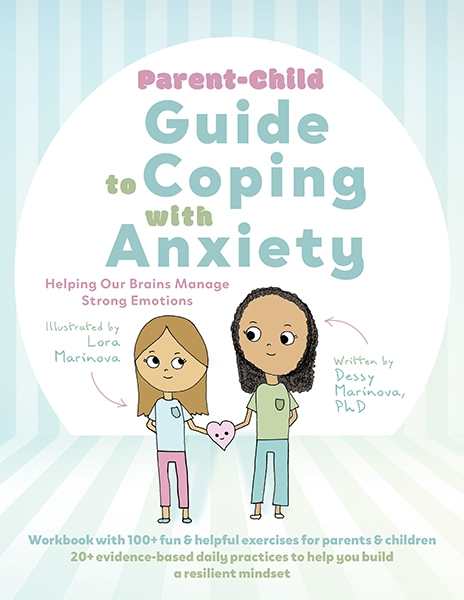Parent-Child Guide to Coping with Anxiety
Helping Our Brains Manage Strong Emotions
The practical self-help text Parent-Child Guide to Coping with Anxiety suggests means of managing the strong emotions that mask childhood anxiety.
Child psychologist Dessy Marinova’s practical self-help text Parent-Child Guide to Coping with Anxiety names ways to help children develop the skills that they need to handle strong emotions. It focuses on children from ages eight to twelve, a period that it calls sensitive, because this is when a child’s cognitive abilities expand and when their expressions of “big” emotions like anger, irritation, and sadness may mask underlying anxiety.
The guidebook is both accessible to parents and child-friendly. Based on the principles of cognitive behavioral therapy (CBT), acceptance and commitment therapy (ACT), positive psychology, and mindfulness, its approach is holistic. It states that anxiety makes the body respond in uncomfortable and hard-to-manage ways; in response, it suggests ways for parents and children to release their physical sensations and treat themselves, and others, with kindness.
This is a true parent-child workbook, with charts to be filled in, exercises to be done, progress to be recorded, and suggested time frames for the completion of each exercise. It encourages focus, dedicated time, and commitment: learning how to regulate anxiety and other emotions, like other forms of learning, requires time, practice, patience, and encouragement. It argues that the results will be worth the investments made.
The book includes clear directions for which exercises should be done together, which are best done by parents first, and which children can handle on their own. It also models a spirit of true partnership, understanding, and mutual respect: Marinova’s eleven-year-old daughter contributes to portions of the book, including illustrations and insights that identify the sources of childhood anxiety. Her personal experiences with anxiety-causing situations are used to show how she employed the book’s suggested tools and practices to get through difficult, confusing times.
For adults, the book explains how to model effective behaviors for children and shares coaching techniques for supporting children’s social-emotional development. It also includes self-assessment questions for parents to evaluate their own strengths and shortcomings. And its unique terms, like “brain snacks” (science-based strategies that help the brain and body feel good and calm the emotions) and “brain bugs” (unhelpful thoughts that make things worse), are appealing as they make complicated psychological concepts more accessible.
Applying the findings of contemporary neuroscience, the practical self-help text Parent-Child Guide to Coping with Anxiety suggests means of managing the strong emotions that mask childhood anxiety.
Reviewed by
Kristine Morris
Disclosure: This article is not an endorsement, but a review. The publisher of this book provided free copies of the book and paid a small fee to have their book reviewed by a professional reviewer. Foreword Reviews and Clarion Reviews make no guarantee that the publisher will receive a positive review. Foreword Magazine, Inc. is disclosing this in accordance with the Federal Trade Commission’s 16 CFR, Part 255.


